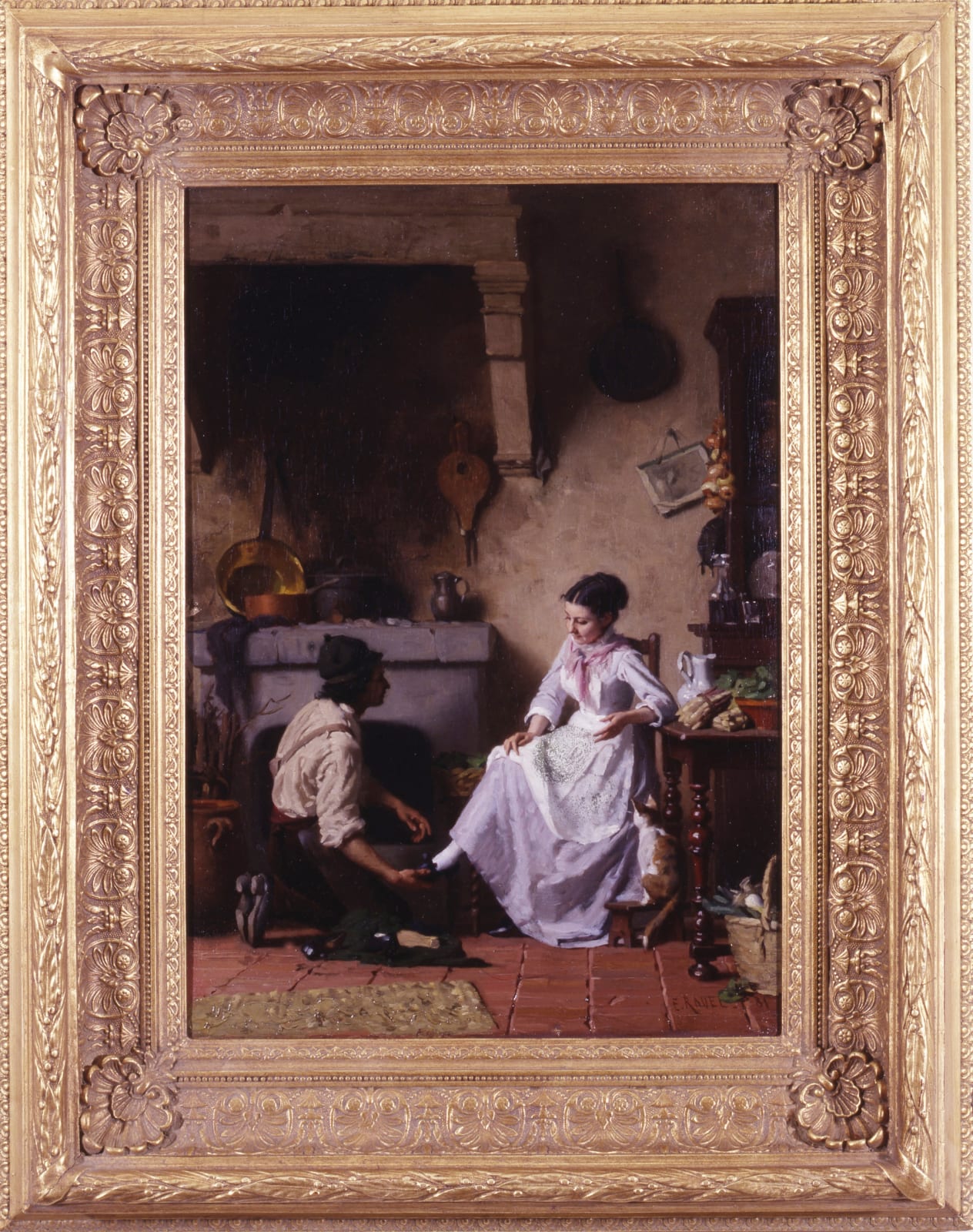Edouard John E. Ravel (1847-1920)
Edouard John E. Ravel (1847-1920)
"The Cobbler and the Slipper"
Oil on canvas, signed and dated 81
59 x 42 cm.
The Swiss artist, Edouard Ravel was born on the 3rd March 1847 at Versoix, near Geneva. He turned his talents to many aspects of the arts, working in oils and watercolours and as an illustrator. He also painted a variety of subjects, from historical and religious scenes, to landscapes, portraits and charming genre scenes, of which this oil is exemplary. He trained at the Ecole d'Art, Geneva under the direction of the figure and landscape artist, Barthélémy Menn (1815-93) and the portrait painter, Alfred Van Muyden (1818-98). From 1878 Ravel began exhibiting his work in Paris at the Salon and later at the Salon des Artistes Français. Among a number of accolades he was awarded an honorable mention in 1879 and a bronze medal in 1889 at the Exposition Universelle. He also received a bronze medal at the Exposition d'Anvers, 1885 and a second class medal at Lyon in 1887.
It appears that Ravel spent much of his career in Paris, although he died in Geneva just after his 53rd birthday on 8th March 1920. He enjoyed a thriving portrait practice, among his sitters were Mme la Comtesse Auguste de Pourtalès and her young children. Like many artists he also taught art. He was a professor at L'Ecole des Beaux-Arts, Paris, where he lectured on the applied arts and history of art. He married one of his pupils, Marie, née Lancats, who showed a number of her still-lifes, landscapes and genre scenes in Switzerland. Both hers and her husband's work can be seen at the Musée Rath, Geneva. The museum owns Edouard's "La Répétition de Chant dans la Sacristie" and "L'Atelier" of 1887. Other of his works, such as "L'Artiste Malade" hangs at the Musée de Lille and "La Patineuse" at the Musée Ariana, while other paintings by him can be seen at the museums of Lausanne, Fribourg, Neuchâtel, Aarau, Lugano and others.
